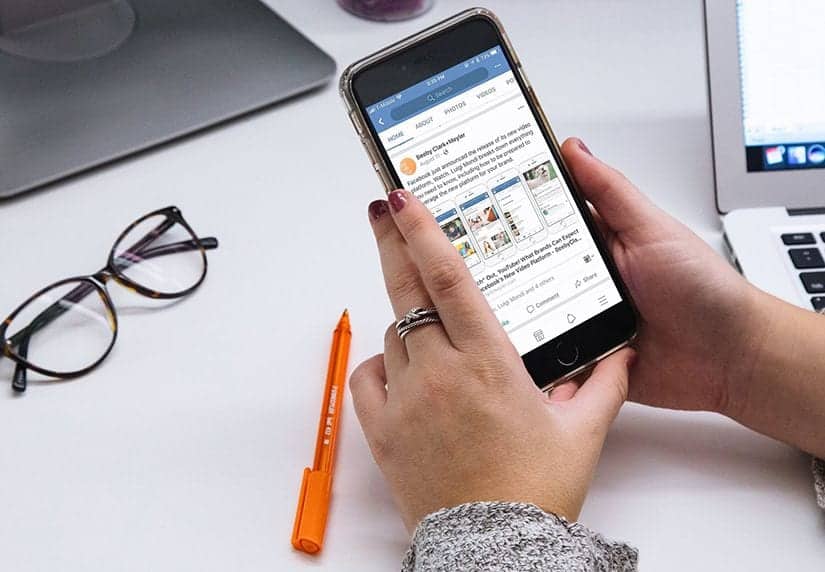Would You Want to Watch Your Facebook Ad? How to Make Your Video Stand Out
Nervous that your brand’s Facebook videos are not getting the attention you’d like? You should be. The hard fact is, you have exactly 2.5 seconds to...


Many folks may be perfectly happy just using the mobile messaging apps that came pre-loaded on their devices, but the number of people heading to the app store to explore other options is multiplying as quickly as the number of messaging apps themselves. Communication is now the No. 1 type of app in the U.K., and No 2 in U.S. and growing, according to App Annie.
While institutional messaging apps such as Facebook Messenger may dominate the top download lists, of late Snapchat has been the messaging app darling that’s had both brands and tech blogs salivating. Nevertheless, there are numerous mobile messaging apps that may be more obscure but just as valuable for marketers. Among the contenders are apps such as Line, Kik, Viber, SlappelDap, BlatherWut and more (I made up those last two to see if you were still paying attention.) Below, we’ll survey the terrain, identify the unique ways marketers are using these apps, and provide examples of how you can – and should – take advantage.
I WALK THE LINE
Though Snapchat is rumored to have between 100-200 million users, mobile messaging app Line boasts more than 205 million monthly users in Japan and nearby Asian countries, where the majority of its user base resides. Line now allows users to use messages to stream music, order food, hail a taxi, exchange money, and pay for virtual goods such as games and stickers. The convenience isn’t lost on Facebook, which now allows friends to send money just as they would on PayPal or Venmo. Using virtual goods such as stickers and emojis is a huge part of the app’s user activity, and therefore, these goods are big business with Line and other apps, ultimately providing a straightforward way in for brands willing to test the waters. Even Sir Paul McCartney from a virtually unknown British rock band has released stickers in Line for $1.99 each.
KIK(START) MY HEART
The Canadian-headquartered messaging app Kik made headlines when NBC became the first broadcast news service to get on it, with consumer brands such as Skullcandy and Vans following suit. Even Burger King is expanding its sesame-seeded reign to Kik with promoted chats and custom stickers. Kik offers functionality reminiscent of WhatsApp, but with platform flexibility similar to Tumblr. This is exciting to developers because it’s basically its own web browser, and because it gets brands thinking more about how they can affect overall UX. Funny or Die, Giphy and SoundCloud all have Kik-optimized sites.
EYE OF THE VIBER
News sites are a perfect fit for mobile messaging apps because their business model thrives on speed and access. Interacting with news sites for a breaking story via an app can be as casual as messaging a friend for more intel. The app Viber set itself apart by introducing public chats akin to Snapchat’s stories, to which users can equally contribute (Snapchat stories are a 24-hour story that users build), and Buzzfeed recently announced they would be using Viber’s public chats to allow users to interact with the content in real time, though chatting directly with the editors was not available.
STOP, CHILDREN WHATSAPP SOUND?
Snapchat, which counts Food Network as one of its publishers, isn’t the only cooking-friendly app out there. Mayo chieftain Hellmann’s recently used WhatsApp to distribute recipes by partnering with ad agency CUBOCC to create WhatsCook, a live recipe service that lets users chat with real chefs or an expert cooking team. Participants learn how to prepare meals in real time using the WhatsApp chat. Aside from chatting, the recipe service allowed for photos, mini-videos, and voice messages, and the sound of the incoming message acted as a timer to start the next step.
GLASS FOOTWEAR
Now that you’re a little more familiar with the vast universe of mobile messaging apps, here are some final tips to keep in mind before launching your mobile messaging campaign:
Receiving a message on a device always on your person is an intimate connection, whether from a friend or Taco Bell, and it’s easy for brands to squander the opportunity to speak with potential customers in real time through a device they’re never without. Don’t be that brand. Instead, follow the example posited in American cinema classic “Bill & Ted’s Excellent Adventure,” and simply, “Be excellent to each other.”
This article originally appeared in Mobile Marketing News.

Nervous that your brand’s Facebook videos are not getting the attention you’d like? You should be. The hard fact is, you have exactly 2.5 seconds to...

In a two-part series, I’m diving a bit deeper to address how brands need to adapt to succeed in the mobile evolution, starting with user acquisition.